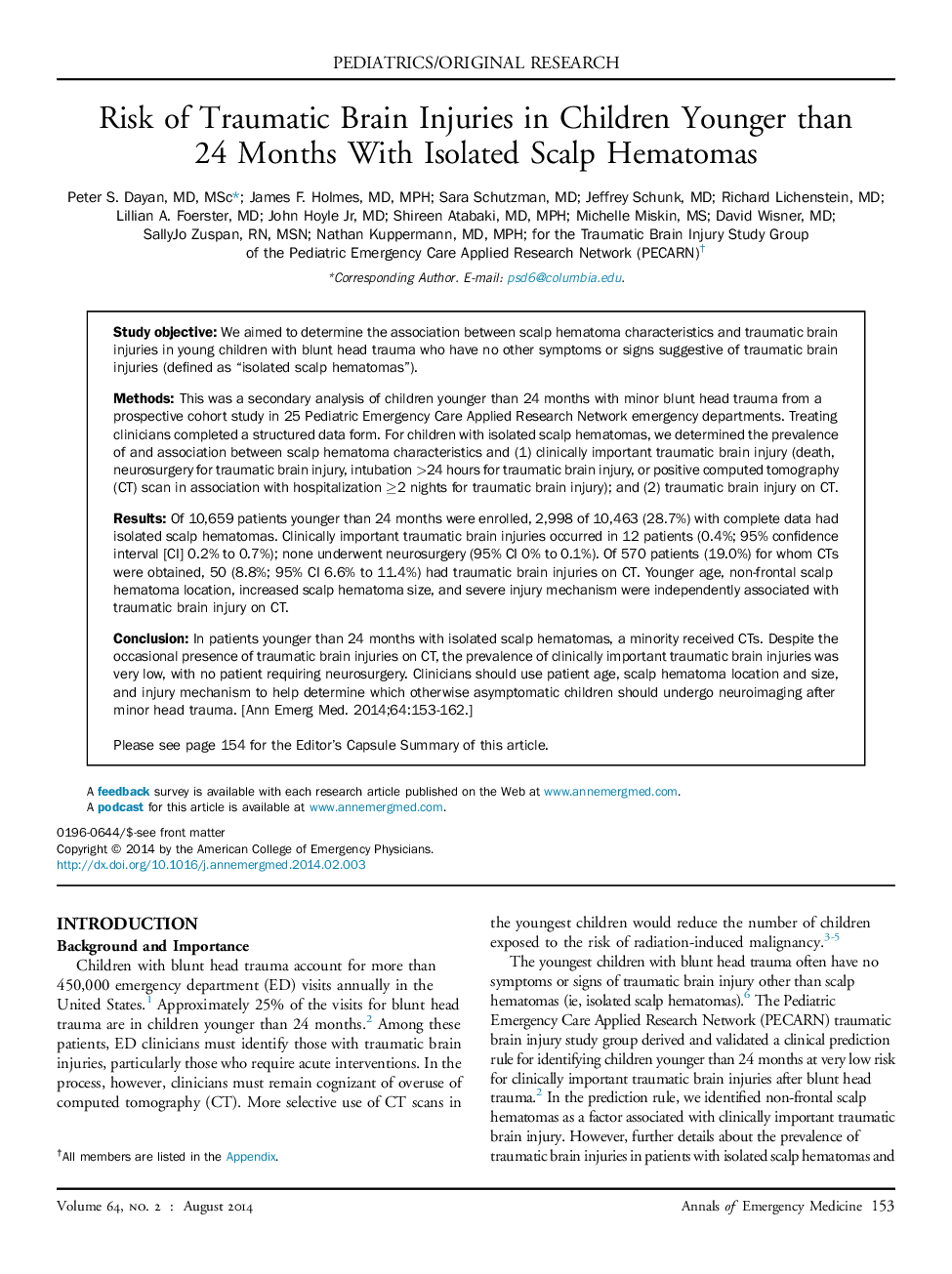| کد مقاله | کد نشریه | سال انتشار | مقاله انگلیسی | نسخه تمام متن |
|---|---|---|---|---|
| 3228751 | 1588530 | 2014 | 10 صفحه PDF | دانلود رایگان |
Study objectiveWe aimed to determine the association between scalp hematoma characteristics and traumatic brain injuries in young children with blunt head trauma who have no other symptoms or signs suggestive of traumatic brain injuries (defined as “isolated scalp hematomas”).MethodsThis was a secondary analysis of children younger than 24 months with minor blunt head trauma from a prospective cohort study in 25 Pediatric Emergency Care Applied Research Network emergency departments. Treating clinicians completed a structured data form. For children with isolated scalp hematomas, we determined the prevalence of and association between scalp hematoma characteristics and (1) clinically important traumatic brain injury (death, neurosurgery for traumatic brain injury, intubation >24 hours for traumatic brain injury, or positive computed tomography (CT) scan in association with hospitalization ≥2 nights for traumatic brain injury); and (2) traumatic brain injury on CT.ResultsOf 10,659 patients younger than 24 months were enrolled, 2,998 of 10,463 (28.7%) with complete data had isolated scalp hematomas. Clinically important traumatic brain injuries occurred in 12 patients (0.4%; 95% confidence interval [CI] 0.2% to 0.7%); none underwent neurosurgery (95% CI 0% to 0.1%). Of 570 patients (19.0%) for whom CTs were obtained, 50 (8.8%; 95% CI 6.6% to 11.4%) had traumatic brain injuries on CT. Younger age, non-frontal scalp hematoma location, increased scalp hematoma size, and severe injury mechanism were independently associated with traumatic brain injury on CT.ConclusionIn patients younger than 24 months with isolated scalp hematomas, a minority received CTs. Despite the occasional presence of traumatic brain injuries on CT, the prevalence of clinically important traumatic brain injuries was very low, with no patient requiring neurosurgery. Clinicians should use patient age, scalp hematoma location and size, and injury mechanism to help determine which otherwise asymptomatic children should undergo neuroimaging after minor head trauma.
Journal: Annals of Emergency Medicine - Volume 64, Issue 2, August 2014, Pages 153–162
